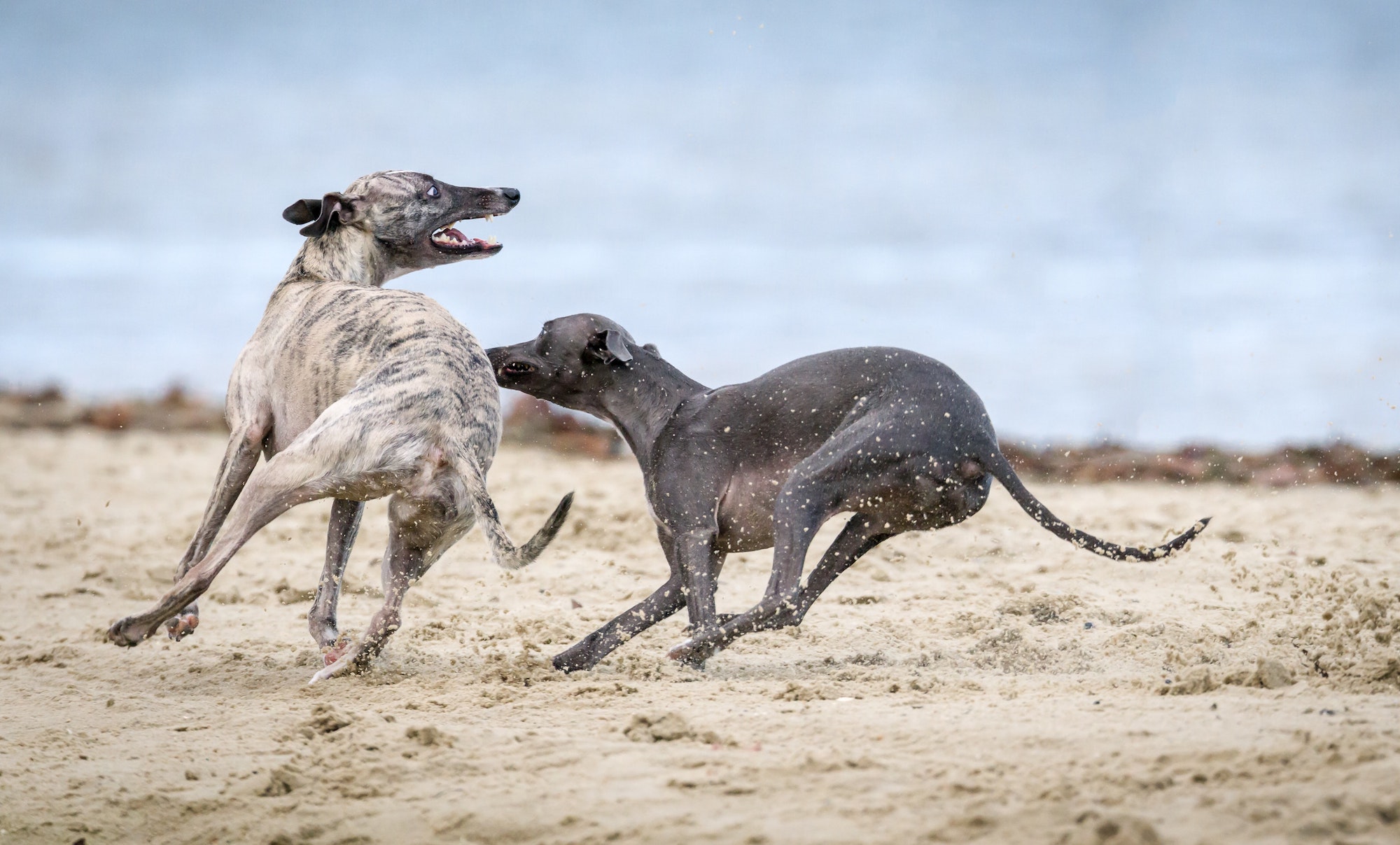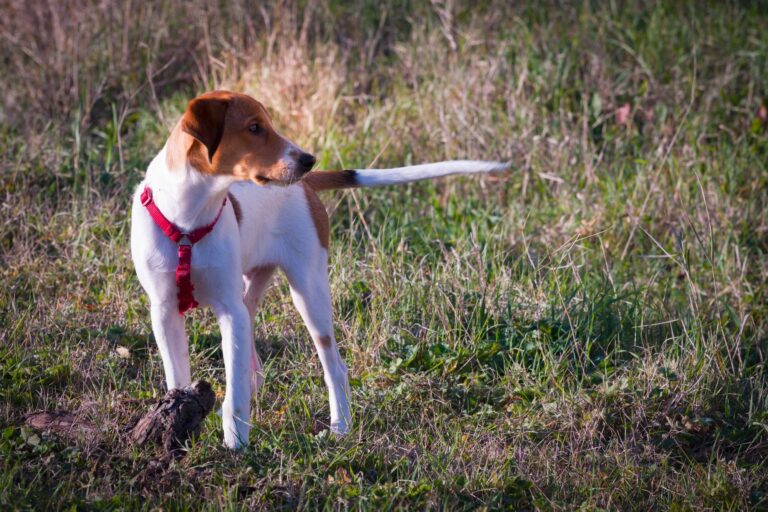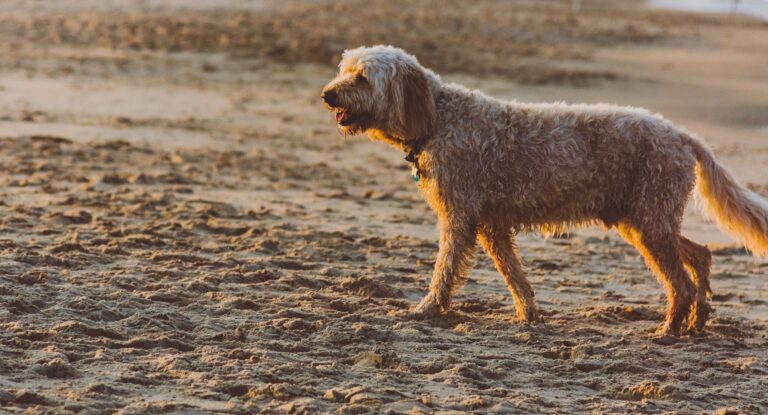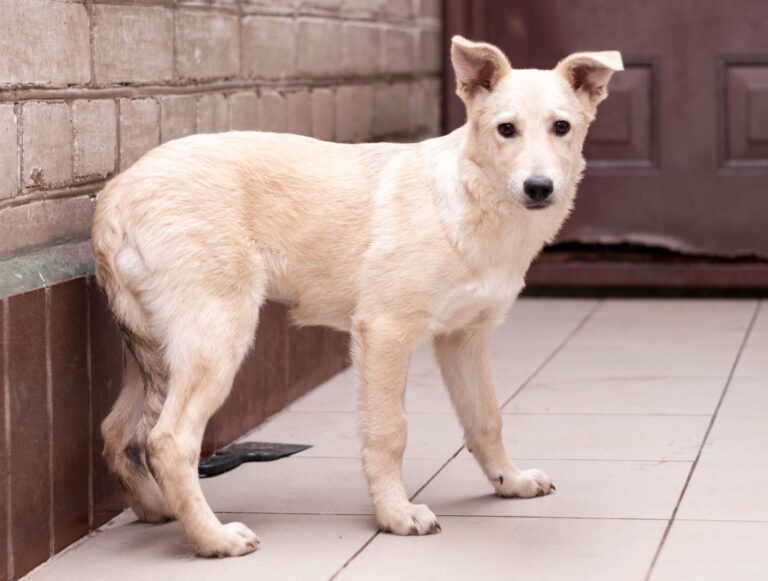What Does a Dogs Tail Tell You
When you think of dogs' tails, you probably think one thing: wags. The wagging tail is one of the most famous forms of non-verbal communication in the animal kingdom.
But tails are so much more than wags. And wags mean more than you might expect.
While a tail looks like a pretty straightforward appendage, there's endless variety in shape, length, coat covering, and of course, usage. A dog's tail is a crucial indicator of their mood. As humans, we tend to rely on facial expressions and tone of voice, but while you can tell certain things from a dog's facial expression (who doesn't love a dog who smiles?), the tail is really where you can understand more about a dog's state of mind at any given moment.
The tail can also help a dog maintain his balance and move around swiftly and quickly.
When it comes to your role as a dog owner, on the tail front you've got two jobs: protecting it from injury, and learning what it's saying about your dog's feelings (as we'll see below, it's not as simple as "if it's moving, they're happy").
Let's head south and take a long look at tails—what they are made of, how they can help a dog function, and what pet owners need to know about reading, and taking care of them.
What's a dog's tail made of?
While their fluid movements can make it appear as if a dog's tail is made of cartilage or just muscle, the tail is made up of a number of small bones. Canine tails are the last segment of the spine and are made up of as many as 23 vertebrae that get progressively smaller from base to tip. The tail also includes muscles that enclose the bones, as well as tendons and nerves. Acting together they facilitate a wide range of tail movement.
What purpose does a dog's tail serve?
Most animals that have four legs also have tails—that includes mammals, and reptiles. For many of them, the tail plays a major role in balance, and in some cases, propulsion (think: crocodile). Since humans walk on two legs, we don't need a tail to help us move or balance.
A dog's tail has three main purposes: to help the dog balance, move, and communicate.
Especially if a dog is moving quickly, changing direction, or climbing, the tail can help steer and guide the dog as a counterbalance, ultimately preventing them from falling, tripping, or overcompensating in the opposite direction. When swimming, a dog mostly uses their paws to paddle, but if you take a look at their backside, their tail might be hard at work, too, acting as a rudder to help them move and turn.
What are the different shapes of dog tails?
How a dog's tail works can also depend on its shape. Just as there are many different breeds of dogs – according to the AKC , 195 registered as of September 2020 – there are different types of tails, too. Some dogs have short tails, some have long tails, some have curly tails, and some even have no tail at all, whether by breeding, or due to the practice of docking.
No tails / bobbed tails

Most dogs that are considered tail-less actually have tiny, stumpy tails, usually called bobbed tails. These breeds include the Brittany spaniel, Braque du Bourbonnais, Pembroke Welsh corgi, Australian stumpy tail cattle dog, Boston terrier, English bulldog, and French bulldog.
There are also certain breeds that are associated with bobbed tails because they've traditionally had their tails docked, or cut off. While this practice was traditionally justified for the health and safety of some kinds of working dogs (for example, a cattle or herding dog may be docked to avoid getting their tail stepped on), it's largely become a cosmetic procedure, and one that the American Veterinary Medical Association (AVMA) opposes .
Ringed/curly/sickle or corkscrew tail

A ringed or curly tail, as the name implies, tends to curl over the dog's back in a spiral or curlicue. Dogs that usually have ringed tails include Samoyeds, akitas, chow chows, and shiba inus. A sickled tail is a type of curly tail, but it tends to be a less defined curl. Some breeds known for having sickled tails include Siberian huskies, and other breeds that are associated with cold climates (in cold weather, these dogs can curl up with their heavy tails wrapped around them, or even covering their noses). In corkscrew tails, the ring is extended into a spiral shape. This type of tail is caused by a vertebrae deformity, so unlike sickled or ringed tails which dogs can straighten according to their mood, corkscrew tails stay in one curled position. Pugs and bulldogs tend to have corkscrew tails.
Otter tail

An otter tail is a thick, rounded tail that tapers toward the end, and in its natural state tends to be pointed down. This is a great tail for water dogs because it's particularly effective as a rudder while swimming. Dog breeds with thicker coats and a water-loving personality generally have this kind of tail—think Labrador retrievers, Chesapeake Bay retrievers, and, naturally, otterhounds.
Whip tail

True to its name, the whip tail tends to look like a whip—long, thin, and mainly straight—and it's most common on short-haired or hairless dogs. These tails tend to be long relative to the length of the body. Most dog breeds that have whip tails are hunting dogs, or dogs known for their speed, like greyhounds, whippets, and wolfhounds. This type of tail is especially effective as a counterbalance so may help with stability, agility and quick turns.
What do different tail wags mean?
Though there are many different shapes and sizes of tails, with some breed exceptions, most tail behaviors mean the same thing no matter the tail type. That's the other, and perhaps most important use for tails: communication or expression.
A wagging tail seems to be the universal sign of a happy dog. But simply seeing a tail in motion isn't enough. We can also learn about the dog's mood and mindset from the position of the tail:
Is it sticking straight up, is it horizontal, or tucked down?
How fast is it moving?
Which way is it moving?
What else is going on with other parts of the body? Is the dog still with only the tail moving?
When you take into account some of these factors, you can see that a wagging tail may be a sign of a dog that's happy and ready to play, or it could signal a dog who is curious, anxious, afraid, aggressive, or uncertain. Other signs like raised hackles, a crouching stance, a play bow, or pricked ears can help round out what the tail motion is saying.
Paying attention to these cues can help prevent or de-escalate conflict, and ensure all social encounters, whether with dogs or people, are pleasant ones. Understanding your dog's body language—and responding correctly to what your dog is trying to say—can also help build a trusting relationship.
Here, according to scientific research and behavior and training experts, are some common meanings to different tail wags.

Tail straight up: The general rule is the higher the tail, the more assertive the dog. If a dog's tail is raised straight up or arcs over the back, it's often an aggressive stance.
However, a higher tail is not ALWAYS a sign that a dog is in an aggressive mode. A tail held higher can be a sign of alertness. Blake Rodriguez, trainer and founder of Dream Come True K9, says he most associates a high tail with an aroused, alert, intense state of mind. "Tension is a word that often best explains this tail position, he says. "This can be dominant, nervous, unsure, or full of suspense, and can find itself turning into aggression or play." Again, look for some of the other body language that's accompanying the raised tail. If hackles are raised, ears are flattened, and the dog is leaning forward almost on tiptoes, those are all signs of a dog in an aggressive posture, so a raised tail in this context should be a loud and clear signal of tension.
Hackles, it should be noted, are a certain kind of hair located along the back of a dog that are connected to muscles called arrector pili. Raised hackles are known as "pilorection." Similar to how you might get goosebumps, or some of your hairs may stand up when you are freaked out, this is an involuntary response from the sympathetic nervous system in response to stress. In other words, your dog isn't "trying" to look tough; their body is responding to something that's got them aroused. And while raised hackles are thought to be an evolutionary trick that allows animals to appear bigger and more threatening, like raised tails, raised hackles don't always mean a fight is about to break out. They can be associated with fear, fear, surprise, or excitement (just like your goosebumps).
Tail position isn't only a visual cue, it conveys a chemical message, too. A raised tail position allows more scent to be released from the anal glands—in other words, a dog is assertively announcing their presence and claiming an area.

Tail horizontal : A tail that's being held straight back may mean that your dog is on alert. Particularly if it's accompanied by pricked ears and a still posture, this position can mean that they've heard or seen something that's got them curious or concerned. Again, it's helpful to look for accompanying body language. Some dogs, like Beagles, can tend to hold their tail more horizontally and it doesn't necessarily indicate a concerned posture. Look for how your dog holds their tail when they're relaxed and use that position as a baseline.

Tail relaxed / hanging and a lower angle: This is typically the default position for a relaxed dog who's just living life (like the beach-loving dog above).

Tail down / tucked: When the tail is in a lower than neutral position, it typically means a dog is showing submission. They are announcing they're not a threat. If the tail is tucked between the legs, it's a more pronounced message of insecurity or fear. They may also be crouched or cowering, licking their lips, or rolling over. Note that these behaviors are the dog's attempt to signal that they want to diffuse a threat. But if the threat persists or they feel no other option, they may lash out.
Again, from a chemical communication standpoint, a lowered tail means less scent emitted from the anal glands, and is the sign of a dog who doesn't want his presence known. Accompanying body language may include flattened ears, gaze avoidance, and lip licking.
Slow, stiff wag: If you're seeing a very slow wag, and the rest of the body is very still, it can mean that a dog is uncertain, anxious, or insecure, or can be a warning sign of potential aggression. As behaviorist and author Patricia McConnell writes , if a dog stands still, stiff-bodied and immobile except for a tail wagging slowly back and forth, it's a big red flag that says to stop whatever you're doing. "Tail wags that only involve the tail are often the canine equivalent of (human) smiles that only engage the mouth," she says. They are NOT honest indicators of a happy dog, and are often a sign of potential danger."
If your dog is wagging their tail and they stop and freeze, this can be a sign that they'd rather avoid what is happening around them. Take stock of what's happening and potentially extricate your dog from the situation if there's a chance that they may be uncomfortable or move to a more aggressive response.
Full, wiggly wag / wagging in circles: This is the wag we all want to see. Here, the tail is moving loosely, probably at a lower position, and it's moving broadly back and forth, or, even more delightfully, wagging in circles. This wagging motion sometimes involves the whole back end, resulting in the wiggling-wagging motion that signals a dog who is very happy to see you.
Lightning fast, short wags: This is a bit different than a simple vigorous wag. There are different meanings to a fast wag, but if your dog's is wagging their tail in super short, super fast wags—this wag has been described as almost vibrating— it can mean they are worked up and about to do…something. That something could be running away, or it might be fighting, so this is a wag that indicates you should either move away from a dog who's directing it at you, or interrupt a situation that's causing your dog to do it.
Wagging to the left/right: In the last several years, researchers have shown that the direction of the wag really matters. In a 2007 study, researchers found when dogs were presented with positive (or "approach") stimuli, such as seeing their owner, they wagged their tails to the right side. When faced with negative (or "withdraw") stimuli, such as seeing a dominant, unfamiliar dog, they wagged to the left side. The same researchers found in a 2013 study that dogs became anxious when they saw another dog wagging its tail to its left side. But when they saw a dog wagging its tail to its right side, they stayed relaxed. These dual wags seem to indicate that, as in humans, the left and right hemispheres of a dog's brain are responsible for different feelings and actions.
This research, which clearly shows how much information a wagging tail provides, also demonstrates that docking a dog's tail can interfere with their ability to communicate.
Why do dogs chase their tails?
In puppies, tail-chasing can be a passing phase, as they get accustomed to their own anatomy but in an adult dog, it can sometimes indicate that something is amiss.
Frequent tail chasing can be a sign of boredom, frustration, or separation anxiety. Is your dog getting enough exercise, mental stimulation, and time outdoors? If they're lacking an outlet, they could turn to this repetitive action. Constant tail chasing can indicate an obsessive compulsive disorder which could be caused by any number of things. Certain breeds are also said to be more predisposed to chasing their tails, including bull terriers and German shepherds.
If your dog is constantly biting at their tail, it could be a sign of a medical condition like allergies, an actual tail injury, anal gland blockage, spinal problems, flea allergy dermatitis (fleas like to live at the rear/tail base), or less commonly, a brain abnormality.
Try to observe your dog's tail-chasing habits and identify what triggers it, or in what situations it seems to occur. Be sure you're not unwittingly contributing to the behavior by laughing at it or otherwise giving it attention. Consult your veterinarian to rule out a medical issue. Your veterinarian, and a certified trainer, can also help get to the root causes and formulate a plan to reduce or eliminate the behavior.
Tail injuries to watch out for
It's easy to assume that nothing can really go wrong with a dog's tail, but dogs can injure their tails in a variety of ways. The longer the tail, the more prone they tend to be to injuries.
Scrapes / cuts
Abrasions and lacerations can be caused when your dog hits their tail against a rough surface, or gets it caught under something like a chair or door. These injuries can also be the result of biting and chewing of the tail, which can in turn be caused by parasites, allergies, dry skin or a number of other things. If your dog is constantly chewing their tail look for any visible injury. For minor scrapes, you can try cleaning the injury with soap and water or vet-recommended medicated wipes. . But even for something seemingly minor, it's worth a visit or telemedicine check-in with your veterinarian to determine the cause of tail biting, and to seek treatment for injuries. Get advice from your vet before wrapping the injury, as too-tight wraps can cause problems, and placing a wrap over some kinds of home remedies can cause more infection Tail injuries can be hard to assess if your dog has a furry tail, and a veterinarian will help prevent infection and improper healing.
Fractures
It sounds awful, but dogs can actually break their tails. If you think about a dog with a longer tail, you can imagine how this could happen—being stepped on, being trapped in a closing door, or even being in the wrong position when a dog jumps or falls down. Some tail breaks are minor, especially those located further down the tail. But even a break at the end of the tail can be painful. And if a break happens close to the base of the spine, it can be more serious. Always consult your vet if you are concerned that your dog may have sustained a tail fracture.
Happy tail and limber tail
Happy tail is actually an unhappy condition that results from over-enthusiastic wagging of the tail. Most commonly seen in dogs with longer tails (pit bulls, Great Danes, and labs are among the typical sufferers), happy tail results when the tail is repeatedly and vigorously banged against surfaces until the skin breaks and it starts to bleed. Over time the injury can turn into a bleeding ulcer. Many dog owners and vets report that this condition is actually quite vexing as the tail—especially the tip—can be a hard area to keep a bandage on, and, well, dogs will just keep wagging their tail. Be sure to consult your vet to treat the injury and make sure there's no bone fracture. Your vet can also show you some methods of keeping cuts wrapped at home.
You can't, and nor would you want to, stop your dog from wagging their tail entirely but you can make sure they're not avoidably hitting their tail in a certain situation or place in your home.
You can observe when over-excited wagging happens and try to channel that energy a bit. Make sure your dog has plenty of exercise and outlets for mental and physical energy. Notice if they're hitting their tail in a certain place, or when they're confined, and give them more room to wiggle.
Limber tail is another motion-related tail injury that sometimes occurs in active or sporting dogs. Sometimes known as swimmer's tail, this condition is actually called acute caudal myopathy and it's caused by overuse of the tail leading to a strain in the muscles that control tail movement. It can show up in dogs who have spent a lot of time swimming or doing other vigorous "work" with their tail or have been exposed to very cold conditions, but it can also be caused by prolonged confinement in a crate. A dog with limber tail may have a limp tail that hangs down, or sticks out horizontally at the base then hangs down toward the end of the tail. Their tail may also be immobile, and they may show discomfort and lethargy, or they may be licking or chewing the tail or have raised fur at the top of the tail.
This condition typically comes on suddenly and can typically be treated with rest—spontaneous recovery occurs in most cases within a few days to two weeks. But consult your veterinarian if your dog's tail seems limp and they haven't been doing any strenuous exercise, or if they are in pain.
Nerve damage
Pulling a dog's tail can result in avulsion injuries, or nerve damage. This can be a serious injury as it can affect not only the nerves that control tail movement, but also those that control elimination, which can lead to incontinence. It should go without saying, but never pull a dog's tail, or allow a child or other person to pull their tail.
Sometimes breaks, nerve damage and other tail injuries may not be immediately apparent. If you notice a lack of movement in your dog's tail, if you suspect that your dog has sustained an injury to their tail, or they are showing a lot of sensitivity to this area, consult your veterinarian.
The bottom line
Dogs' tails communicate what their barks and eyes cannot, and are often saying more than we think. Take the time to observe all of your dog's wonderful wags so you can have your dog's back when they need it, and "speak" to each other all the more clearly.
Pet health is an important topic. That's why The Farmer's Dog editorial team carefully vets and reviews every piece of content we publish. We deliver evidence-based advice and medically reviewed facts that focus on pet nutrition, health, and well-being. The mission of this site is to help people provide the best care possible for their dogs by publishing only trustworthy, accurate, and timely health information from a group of passionate experts.
This article was vetted by a vet.
Reviewed by Deepti Johar, DVM.
Photos in story: Boston terrier: Photo by Oskar Kadaksoo on Unsplash; shiba inu: Photo by Jae Lee on Unsplash; Black lab: Dennis Bertuch on Unsplash; greyhounds: Photo by Mark Galer on Unsplash.
What Does a Dogs Tail Tell You
Source: https://www.thefarmersdog.com/digest/what-your-dogs-tail-is-trying-to-tell-you/

0 Response to "What Does a Dogs Tail Tell You"
Post a Comment